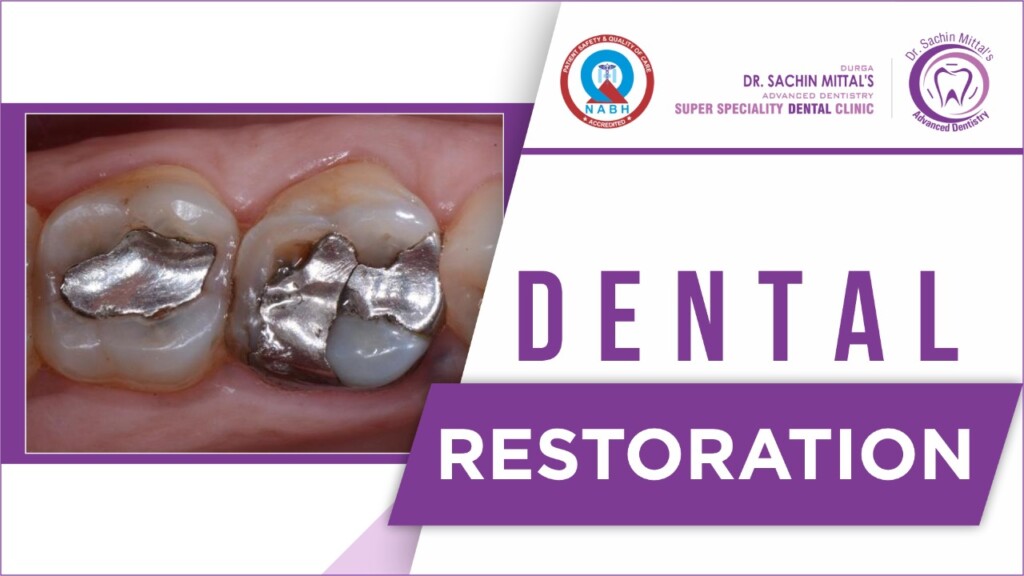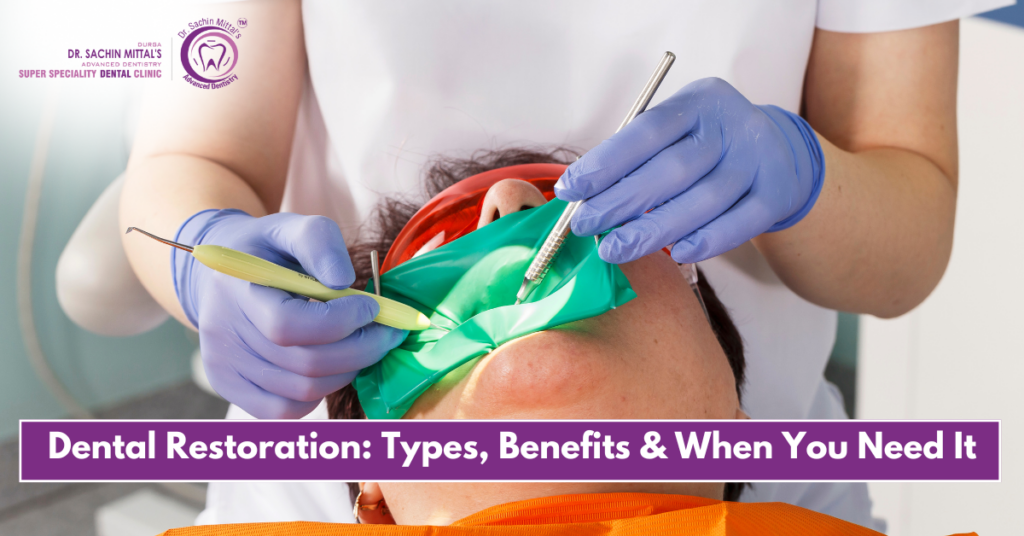What Does Dental Restoration?
Restorative dentistry encompasses anything that aids in the resolution of oral health issues and strives to restore the mouth’s functional and aesthetic state. Restorative dentistry includes dental fillings, veneers, crowns, bridges, partial and full dentures, and implants, and is sometimes referred to as prosthodontic dentistry.
The basic goal of restorative dentistry is to keep natural teeth as much as possible while also replacing them when necessary. Natural tooth preservation can aid in the preservation of structure and function.

However, there are times when a tooth’s damage is simply too severe to be healed. The tooth should be extracted and the gap closed as soon as feasible with a replacement denture, bridge, or implant. This helps to minimize germs and plaque buildup, excessive chewing stress on remaining teeth, shifting teeth and misaligned bites, and other concerns that can arise as a result of the gap.
When tooth damage necessitates restorative dentistry, your dentist will carefully examine the tooth to see whether it can be saved or if it needs to be extracted.
Because certain dental restoration operations, such as dental implants, necessitate a high degree of health, your oral and general health will be taken into account. They’ll go over the scenario and their recommendation with you in detail, and they’ll urge you to raise any questions or voice any concerns you have.
There are many various forms of dental restorations that act to repair worn, rotting, damaged, or missing teeth, but they can be divided into two categories:
Dental restorations that are applied directly to the teeth. Your dentist will prepare the tooth and install a filling in it in a single office visit with direct dental restorations. Because some fillings are made of substances that are clearly visible when in the mouth and some fillings are better suited to withstand heavy chewing pressure than others, the type of filling your dentist chooses for a direct dental restoration will depend on the type of repair needed as well as the location of the repair. Direct dental repairs are often the best option when tooth damage isn’t too severe.
Dental restorations that are done in a non-direct manner. An indirect dental restoration may be required when tooth damage is severe. Because the area must be prepared for the restoration before an imprint is made, and the restoration will be produced in a dental laboratory and fitted at a later date, these restorations require more than one office visit. Indirect dental restorations include crowns, also known as caps, which cover the full chewing surface of a tooth that covers one or more cusp tips, and inlays, which cover the surface within the cusps of the tooth.
Indirect restorations, like direct restorations, can be constructed from a variety of materials and for a variety of purposes. Most dental restorations should be cared for in the same way as natural teeth: twice-daily brushing, once-daily flossing, and twice-yearly dental checkups and cleanings. However, some dental restorations require more gentle maintenance, such as dentures, which can be removed and cleaned with a light soap rather than abrasive toothpaste.

